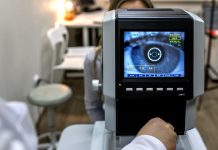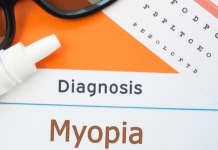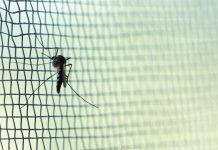Myopia has a significant economic and societal impact globally, and its prevalence in the digital age is increasing. We discuss the causes, symptoms and treatment for this condition
Myopia, also known as near-sightedness, is a prevalent eye condition affecting millions globally, distorting their ability to perceive distant objects clearly. This visual impairment, frequently diagnosed in childhood, is typically addressed with corrective measures such as glasses, contact lenses, or even surgical procedures. The subsequent paragraphs will explore the fundamental aspects of myopia, including its causes, symptoms and diagnosis, as well as strategies for effective management and prevention.
At least 2.2 billion people suffer from blindness or vision impairments, and about one billion cases of vision impairement could have been prevented, according to the World Health Organization (WHO). The condition is rapidly increasing among school-aged children. This disturbing trend is associated with lifestyle changes, including increased screen time and decreased outdoor activities.
Certain risk factors can contribute to the development and progression of myopia. These include genetics, with a higher risk if one or both parents are myopic, and environmental factors, such as extended periods of close work.
Untreated myopia can lead to severe complications, including retinal detachment, cataracts, and even blindness. Therefore, early detection and appropriate treatment are crucial.
Identifying symptoms, causes, and diagnosis
Recognising signs is a critical first step in early detection. Myopia generally manifests as difficulty seeing objects far away, often leading to squinting or straining eyes. Headaches may also occur due to the constant strain. In children, these signs may be coupled with poor academic performance.
Timely diagnosis is crucial and involves regular vision tests, starting from an early age, as well as comprehensive eye examinations that may include visual acuity tests and refraction assessments.
Exploring types, complications, and management
Myopia can be classified as simple or pathologic. The latter carries increased pathologic risks such as retinal detachment, glaucoma, and cataracts, requiring closer monitoring and more aggressive management approaches.
Corrective glasses with progressive lenses are often the first line of treatment in managing myopia. These lenses can correct multiple vision problems simultaneously, gradually changing lens power for a seamless transition between near, intermediate, and far vision. An alternative to glasses is contact lenses, with the orthokeratology option being a non-surgical method that uses specially designed lenses worn at night to reshape the cornea and correct refractive errors.
For more permanent solutions, laser surgery may be considered. These procedures reshape the cornea to correct the refractive error and improve vision. However, they are generally reserved for adults whose eyes have stopped growing and not without potential risks.
Prevention strategies and myopia outlook
Several prevention techniques and lifestyle modifications can be adopted to manage the condition and improve its outlook. A primary prevention strategy involves reducing screen time. Regular breaks are advised when working with digital devices. Another significant method is increasing outdoor activities. The benefits of spending time outdoors, particularly in natural light, have been linked to a lower risk of developing myopia or slowing its progression in those already diagnosed. Regular eye examinations and adherence to prescribed treatments can significantly improve the outlook for people with myopia.
Emerging treatments, such as orthokeratology and atropine eye drops, are promising advancements in myopia management. Understanding these prevention strategies is key because myopia is largely manageable with the right interventions.
Lifestyle adjustments for living with myopia
An eye-friendly workspace is essential for managing myopia. This includes good lighting, regular screen breaks, and maintaining an ideal distance from your computer. Excessive screen time can strain the eyes and exacerbate myopia. Limiting device usage and taking frequent breaks can mitigate this. Activities that encourage focusing on distant objects, such as bird watching or star gazing, can also be beneficial. A diet rich in vitamins A, C, and E and omega-3 fatty acids can also help maintain eye health.
The WHO’s Sensory Functions, Disability and Rehabilitation (SDR) unit
WHO’s SDR unit promotes global action for sensory impairments, rehab services, and health equity for persons with disabilities. A key part is strengthening services for eye care, vision impairment and blindness.
Recent activities have included the launch of the Vision and Eye Screening Implementation Handbook (VESIH), which comprises evidence-based interventions and step-by-step guidance for vision and eye screening in community and primary care settings. These steps could be particularly beneficial in low- and low-intermediate- resource settings.
Equally, on World Sight Day 2023, the WHO launched a free app called ‘WHOeyes’ to help the general public check their short and long-sightedness and increase awareness of how they can better protect their vision. The WHO’s Director for Noncommunicable Diseases, Dr Bente Mikkelsen, said: “We decided to share this simple eye test and quick tips for eye care on an app, as people use their phones daily, and many people are unaware that they have a vision problem until it is too late.” The app is currently available in six UN languages.
Editor's Recommended Articles
-
Must Read >> Prioritising brain health in Europe and beyond











